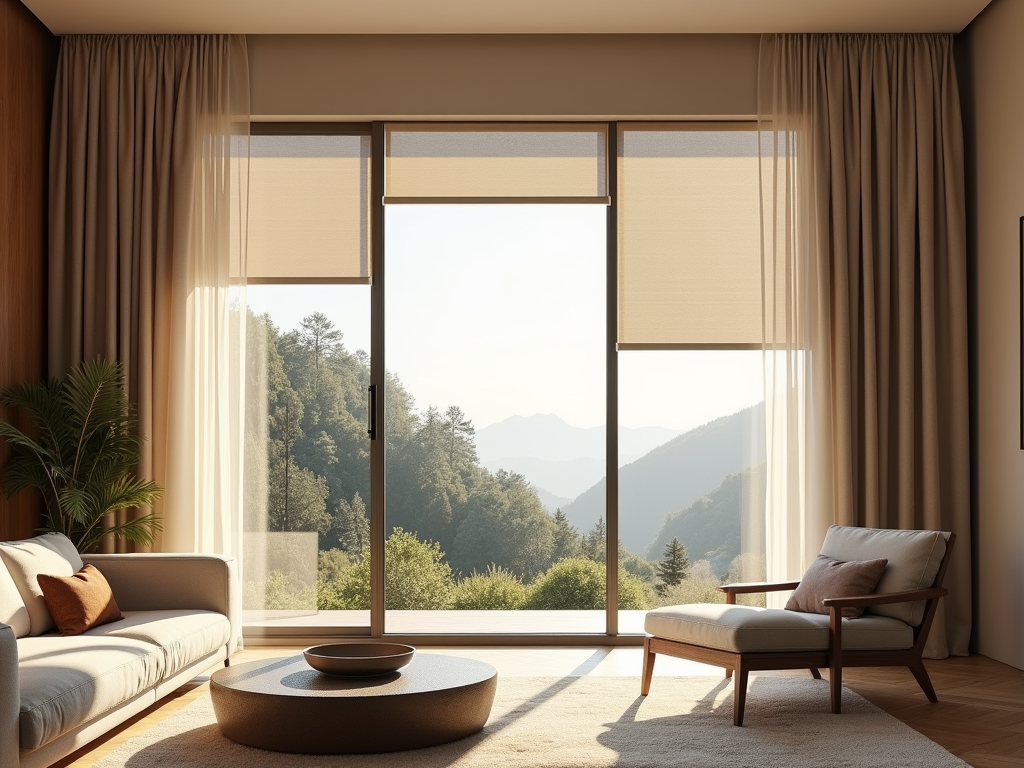
Key Takeaways
- Light control improves with choices like light-filtering shades, blackout curtains, or dual-function blinds. Each option provides a unique way to manage brightness throughout the day.
- Privacy solutions work best with flexible options, such as sheer-and-heavy drapery pairs or dual-layer treatments that transition easily between open and closed settings.
- Energy-saving benefits increase with smart insulating choices, including honeycomb shades and thermal-lined curtains. These options regulate indoor temperatures while adding texture to the space.
- Style and functionality matter most; motorized shades combine modern convenience with a polished, minimalist design. They’re excellent for hard-to-reach windows or busy households.
- Accurate measurements, whether doing it yourself or hiring a professional, guarantee the treatments fit seamlessly. Both inside and outside mount setups benefit from precision during the planning stage.
Maximizing Impact with the Right Window Treatments for Large Windows
Large windows can transform a room, giving it an airy, open feel and framing stunning views. But they can also pose challenges like controlling light, ensuring privacy, and maintaining energy efficiency. Addressing these issues is all about balancing function with style.
Managing Light Effectively
To tackle excess light, I suggest light-filtering shades or layered treatments with blackout curtains. This way, you can adjust the illumination to suit your mood. These options not only add a unique charm to your interiors but are also highly functional for creating the perfect ambiance.
Enhancing Privacy
Privacy concerns can be handled effortlessly with options like dual-layer blinds, which let you switch between sheer and opaque materials. This versatility ensures your home is stylish and private when needed.
Improving Energy Efficiency
For energy efficiency, insulated drapery or honeycomb shades make a noticeable difference in regulating temperature and reducing heating or cooling costs. These solutions are both eco-friendly and cost-effective over time.
Prioritizing Style
Aesthetic choices shouldn’t take a backseat. Consider wide-panel blinds or motorized options for a sleek, contemporary look. Adding these elements ensures your space remains modern and functional. You can explore more ideas in this guide about the latest window blinds types.
Summary
Maximizing the impact of your large windows involves finding a delicate balance between function and form. With thoughtful choices in window treatments, your space can embrace more light, warmth, and beauty.
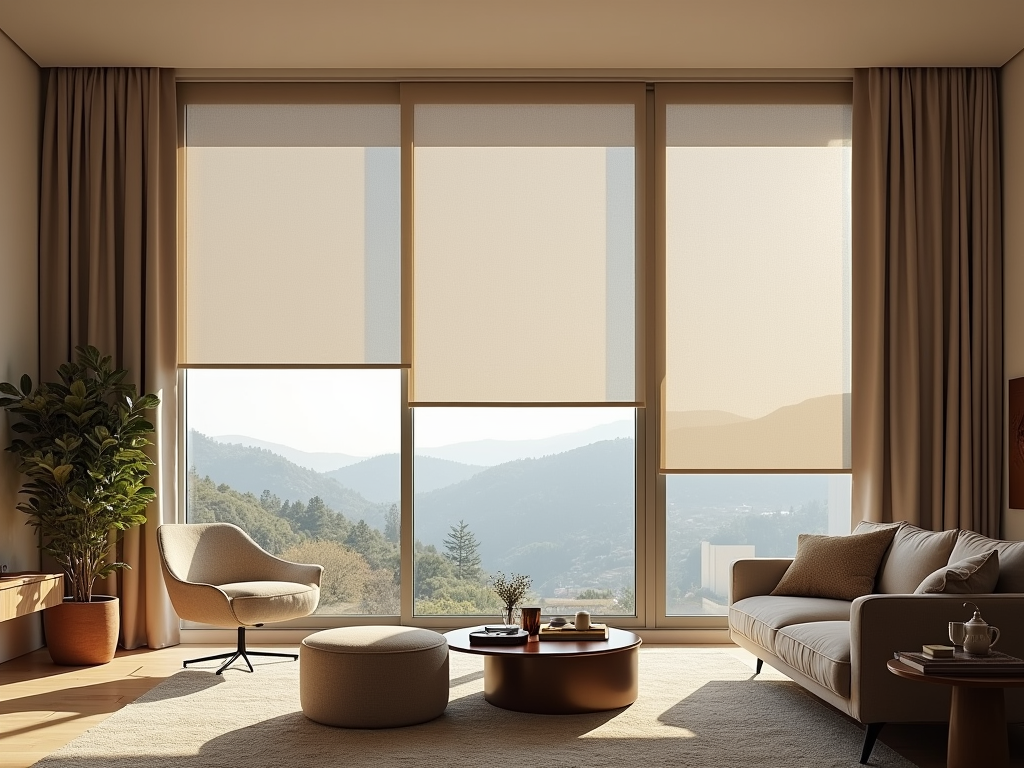
Measuring Large Windows the Right Way
Getting the measurements spot-on is crucial to ensure your treatments fit perfectly and operate smoothly. Missteps here can lead to gapping, uneven coverage, or treatments that simply don’t work as intended.
First, decide how you want your window treatments mounted. Inside mounts sit within the window frame, giving a clean, streamlined look. Outside mounts, on the other hand, go over the frame, ideal for maximum light control and covering any gaps. Once you’ve chosen, grab a steel tape measure (never rely on a flexible fabric one for this task) and follow these steps.
For Inside Mounts:
- Measure the width across the top, middle, and bottom of the window. Take the smallest number—you’ll need the treatment to fit tightly at the narrowest point.
- Then measure the height of the window at the left, middle, and right sides. Use the longest measurement for proper coverage.
- Finally, measure the frame’s depth to ensure it can accommodate the treatment style you’re considering. Some types, like cellular shades or blinds, need a specific clearance.
For Outside Mounts:
- Start by measuring the width of the entire area you want to cover. Add at least 2–3 inches on each side for better light control and privacy.
- Measure the height from where you’d like the top of the treatment to start down to your desired drop length. Adding a few extra inches above the window can create the illusion of taller windows.
By skipping accurate measurements, I’ve seen people struggle with treatments that leave awkward gaps or sag awkwardly. Whether it’s blinds, shades, or shutters, having precise dimensions can make or break your choice. For more insights, check out the guide on why blinds can be a great option.
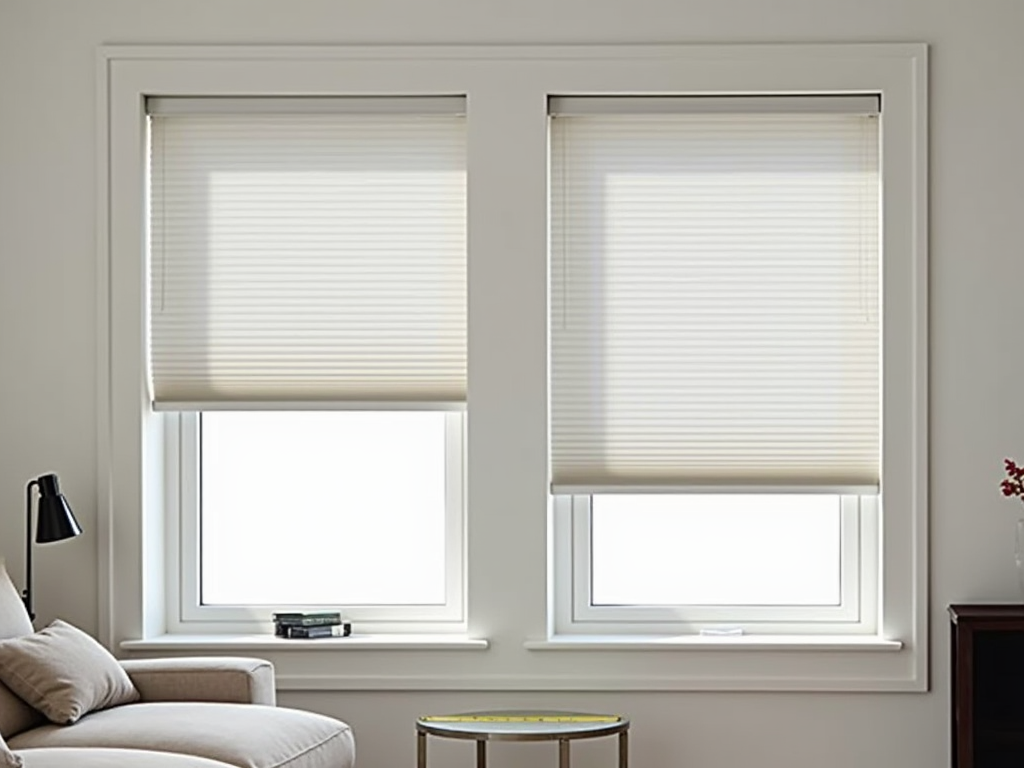
Large windows can set the tone for a room, but choosing the right treatment makes all the difference. Curtains and drapes are classics, especially floor-to-ceiling options. They instantly add drama while elongating the room. For a modern vibe, seamless roller shades work beautifully, offering clean lines and effortless operation.
Blinds, with their adjustable slats, provide precise light control and pair well with almost any décor. Shutters, on the other hand, bring structure and timeless charm, especially for spaces needing both privacy and style.
Layering treatments can solve various challenges. Combine sheer curtains with heavier drapes to mix soft, filtered light during the day and insulation at night. For more ideas on versatile window blind styles, check out the latest options for blinds. The key is creating both function and style without overwhelming your window’s natural beauty.
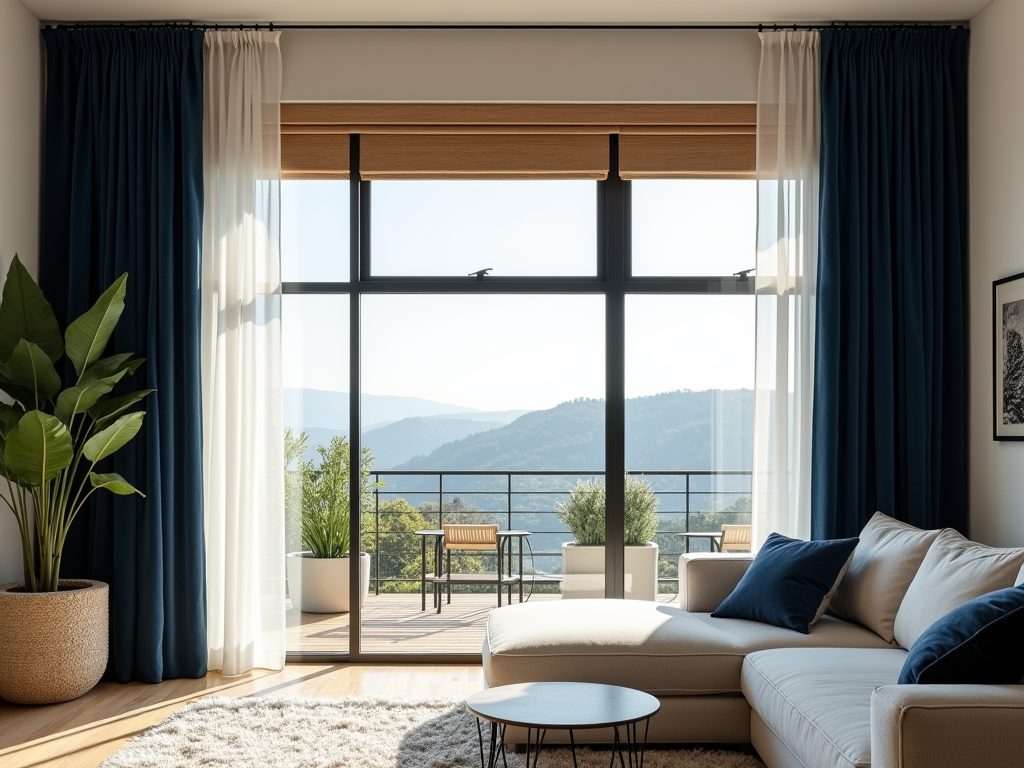
Choosing Fabrics and Materials for Light Control and Insulation
Picking the right fabrics plays a big role in how much light enters a room, how much privacy you get, and even your home’s energy efficiency. For light control, fabric opacity is key. Sheer fabrics let in soft, diffused light while still offering visibility outside. Light-filtering fabrics are a great middle ground, softening sunlight while limiting views into your home. Blackout fabrics block up to 99% of natural light—ideal for bedrooms or media rooms. Each choice balances privacy and illumination differently, so you’ll want to consider specific areas and their needs.
If insulation and energy efficiency are priorities, cellular shades shine. Their honeycomb structure traps air, slowing temperature transfer and reducing heating and cooling costs. Studies show they can cut energy loss by nearly 40% in some cases. For energy-efficient fabrics, look for those designed to reflect UV rays and heat, which lighten your HVAC system’s load in summer months.
When comparing materials, each has its strengths:
- Cotton is easy to maintain and durable, but it can fade under prolonged sunlight exposure.
- Linen offers an organic, airy look but wrinkles easily and needs more care.
- Silk adds luxury and shimmer but can deteriorate without UV protection.
- Synthetic fabrics, like polyester blends, resist fading and wear while offering easier maintenance. If UV protection is a must, synthetic options often block up to 90% of harmful rays, protecting interiors and prolonging the life of your décor.
For more inspiration, check out this guide on window blind benefits, especially if flexibility matters for your space.
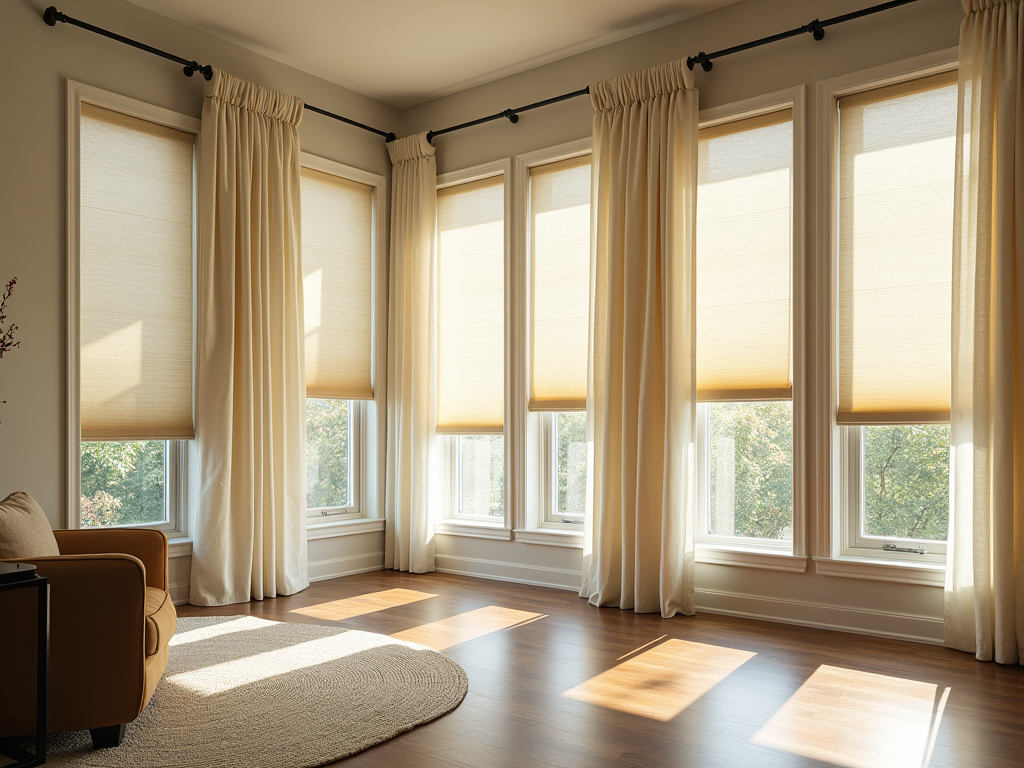
Convenience and Innovation: Motorized and Smart Window Treatments
Large windows can be stunning, but handling their treatments can often be a hassle. That’s where motorized and smart systems shine. For hard-to-reach spots, many people find motorized blinds and shades to be a game-changer. Unlike traditional manual or corded systems, motorized versions allow you to control them with a remote, a smartphone, or even voice commands if synced with systems like Lutron or Somfy.
These advanced options bring several advantages:
- Energy efficiency: They can adjust automatically based on sunlight, helping manage indoor temperature.
- Child safety: Cordless designs remove choking hazards.
- Enhanced security: You can schedule them to open or close while you’re away for a lived-in look.
While manual and corded options are budget-friendly, motorized systems can cost significantly more but deliver unmatched convenience and sophistication. For tips comparing styles, you can explore the latest window blind types.
Budget Considerations and Seamless Installation
Prices for window treatments can vary a lot, so it’s important to set a budget before diving in. If you’re considering curtains, you’ll find that the material heavily impacts the cost. Basic fabric curtains might start around $20 per panel, while heavier, thermal-lined drapes can climb upwards of $200. Cellular shades, on the other hand, often fall in the $40 to $300 range depending on the size and whether they’re single or double-cell designs. For a modern and polished look, blinds tend to be mid-range. If you’re curious about how options stack up, here’s a guide on why blinds could be a great choice for homes.
Deciding between DIY and professional installation can make a big difference, both in wallet impact and effort. Professional installation is usually faster and more precise, but it comes at a price. Expect $50 to $100 per window for simpler setups, and more for motorized or custom treatments. DIY might save you that cost, but it’s your time on the line. It could take several hours to measure, drill, and mount everything correctly.
If you’re leaning toward professional help, consider the following:
- Look for installers with stellar reviews online.
- Ask for recommendations from stores selling window treatments.
Want to go the DIY route? Many brands provide clear instructions, and you can follow online resources or try tutorials on how to achieve clean results with minimal frustration. A little prep can go a long way!
Sources:
